1-3-06 Field Trip
The first part of the afternoon consisted to loading gear in a pickup truck to drive over by the New Zealand Scott base, where the only active ramp from land onto the ice is currently located. The transitions fromland to ice near McMurdo have all been shut down due to melting and unstable ice right next to shore. We then had to walk about a 1/4 mile on the ice to get our snowmobiles, bring them back to the transition, and load our gear. We need to bring large survival kits with tents, sleeping bags, food, and a stove for any trip out on the ice or away from base. We also brought along tools for cleaning out the ice holes,along with our bags of cold weather gear.
Here we are getting acquainted with the snowmobiles.
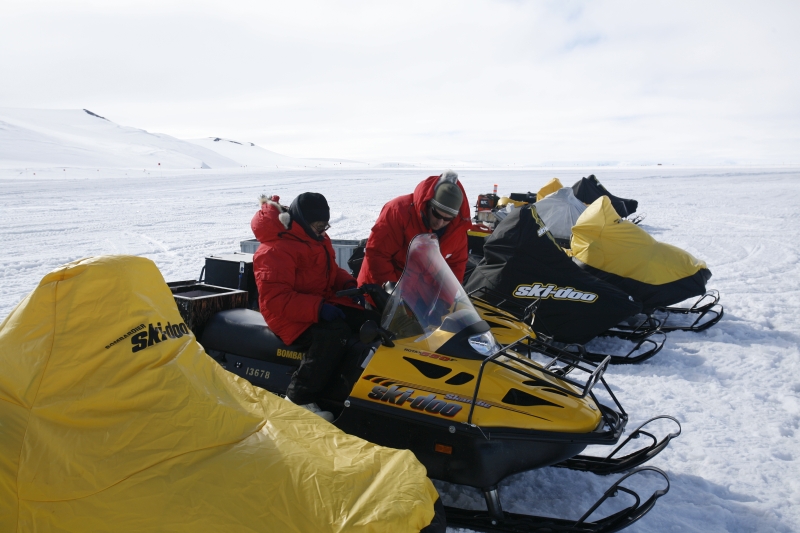
Hauling gear by snowmobile is best done with these large plastic sleds. All of our gear for three people is loaded on this sled and pulled behind the snowmobile at brisk speeds. Today was quite windy, and coupled with the long drive on snowmobiles, we had to bundle up completely. With all the gear on it was quite warm and pleasant.
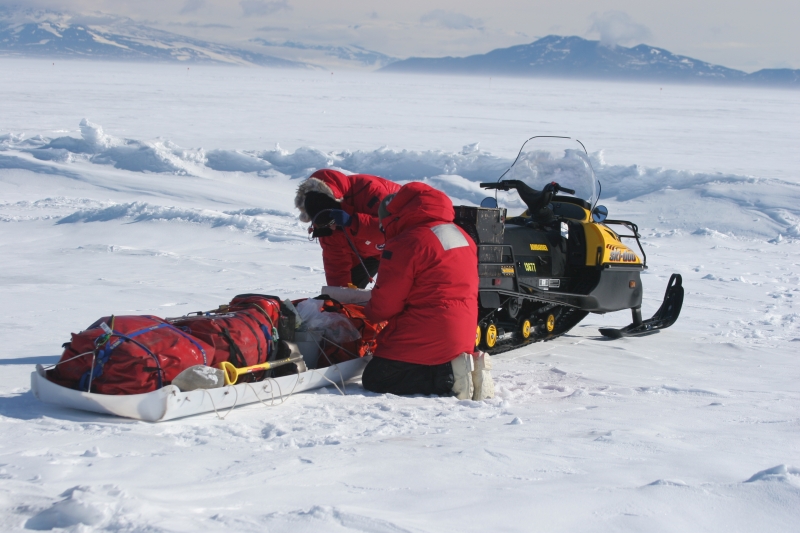
Once we found our ice holes, we set to work digging them out. These holes had been used by other groups earlier in the season, but they had not been used since some time before Xmas, and were covered in snow. Asthis was an exploratory and shakedown trip, we took some time to dig out the holes, but we didn't completely chip all of the ice out of them yet, since we won't really start using them for another week.
The holes were marked with flags, but were otherwise obscured.
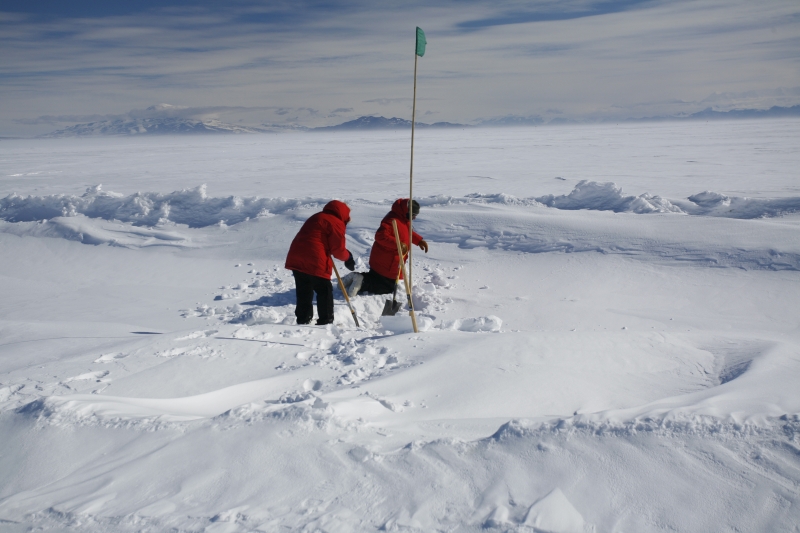
We set to work digging out the accumulated snow. The holes are left covered with a foam plug topped with plywood to help keep the hole from freezing solid.
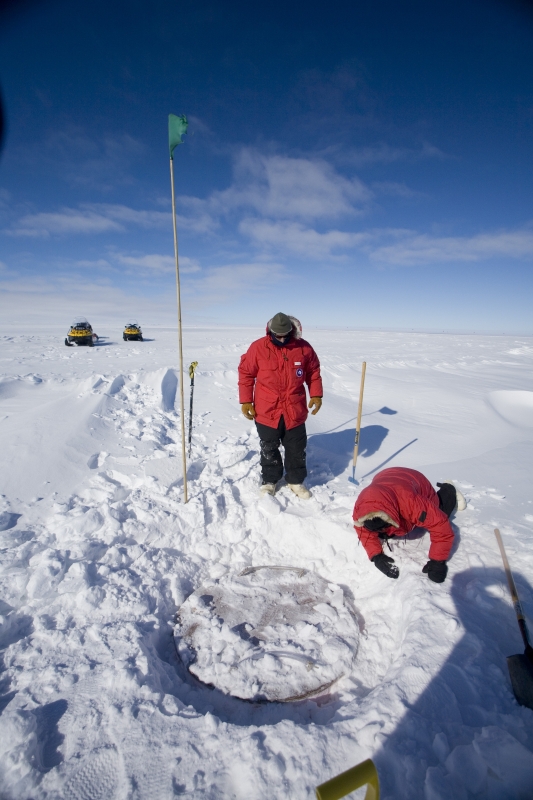
Here is the plug pulled up out of the hole, showing the layer of ice that has frozen underneath it. Next week we will have to chip out the ice in the hole.
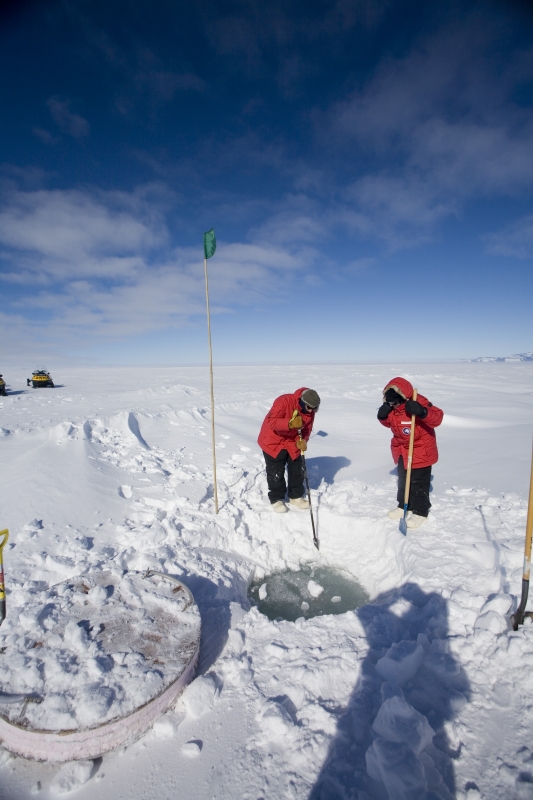
Mission accomplished, we turned around and raced back home to get there before the cafeteria closed. Along the way the view to Mt. Erebus cleared up enough to take some pictures. This volcano is quite active,and was making small eruptions within the crater back in December. Today it was making a nice plume of steam.
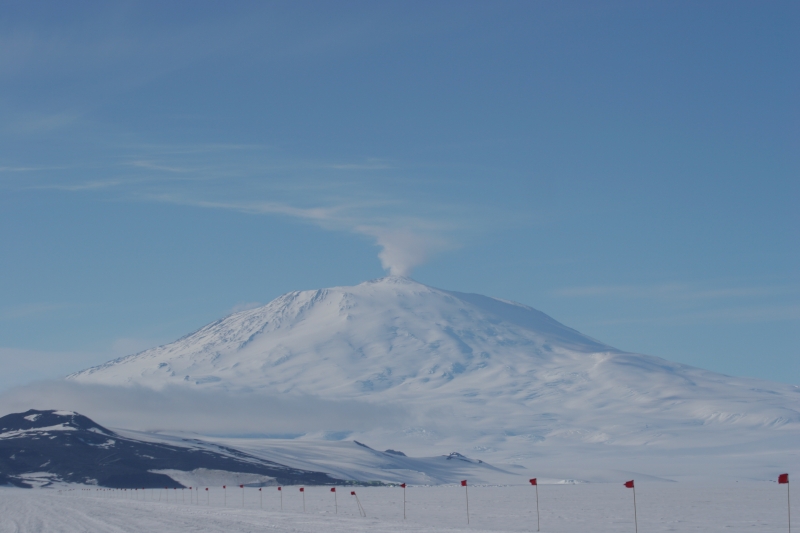

<< Home